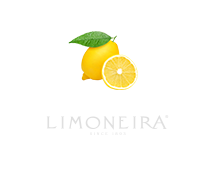Lemons rank very close to oranges in vitamin C content. So if you’re choosing between flavoring your food with lemon or orange peel, or adding lemon or orange juice to a dish, you can’t go wrong with either one. But in some ways comparing lemons to oranges is, well, like comparing apples to oranges – because you’re not likely to eat the two fruits in the same way.
Tip
For most adults, the recommended daily dietary intake of vitamin C is 90mg for men and 75mg for women. Adult women who are pregnant or nursing need more vitamin C (85mg to 120mg, respectively). Children need less, between 15mg and 75mg depending on their gender and age.
Taking Apart a Lemon
Not all parts of the lemon were created equal. Interestingly, you’ll get more vitamin C from lemon peel – 129mg per 100g of peel – than from eating a whole peeled lemon, which contains “just” 53mg of vitamin C in the same serving size. But since you’re unlikely to eat a more than a pinch of lemon peel as lemon zest or eat a whole lemon, the most relevant vitamin C content is in lemon juice, which contains 38.70mg of vitamin C per 100g serving.
Comparing Lemons to Oranges
Like lemons, oranges have the most vitamin C in their peel: 136mg, or just 7mg more than a lemon, in 100g of orange peel. The next-best source of vitamin C from an orange is the fruit itself: 53.20mg, barely more than you’d get from a lemon. The difference here is that, unlike lemons, you’re quite likely to eat a whole orange. Fresh orange juice follows closely after, with 50mg of vitamin C per 100g serving. Interestingly, orange juice from concentrate has less vitamin C, with just 36.20mg per serving.
Juicy Details
So when it comes to a real-world comparison of the parts of the fruit you’re most likely to use, which comes out ahead in vitamin C content? If you’re looking for a good citrus juice, fresh orange juice wins (50mg), followed by lemon juice (38.70mg) and orange juice from concentrate (36.20 mg). If you’re looking for whole fruit to include in your cooking, a whole peeled lemon and a whole peeled orange have basically the same vitamin C content (53mg versus 53.20mg).
Other Good Sources of Vitamin C
If the idea of sucking on a lemon doesn’t appeal to you, opt for raw acerola, aka west Indian cherries, if you can find them; they have the highest vitamin C content of any fruit. More common fruit sources of vitamin C include guavas (228.30mg), European black currants (181mg) and gold kiwis (161.30mg). Also excellent are frozen peaches (94.20mg), persimmons (66mg), pummelo (61mg) and papayas (60.90mg).
source: healthyeating.sfgate.com by Lisa Maloney





